Oaks: A National Treasure, and Our National Tree
As July 4th approaches, let's celebrate our national tree: the oak. That's right, back in 2004, the oak tree was named our national tree due to its strength, beauty, and resilience (beating pine, maple, and dogwood - among others - for the title).
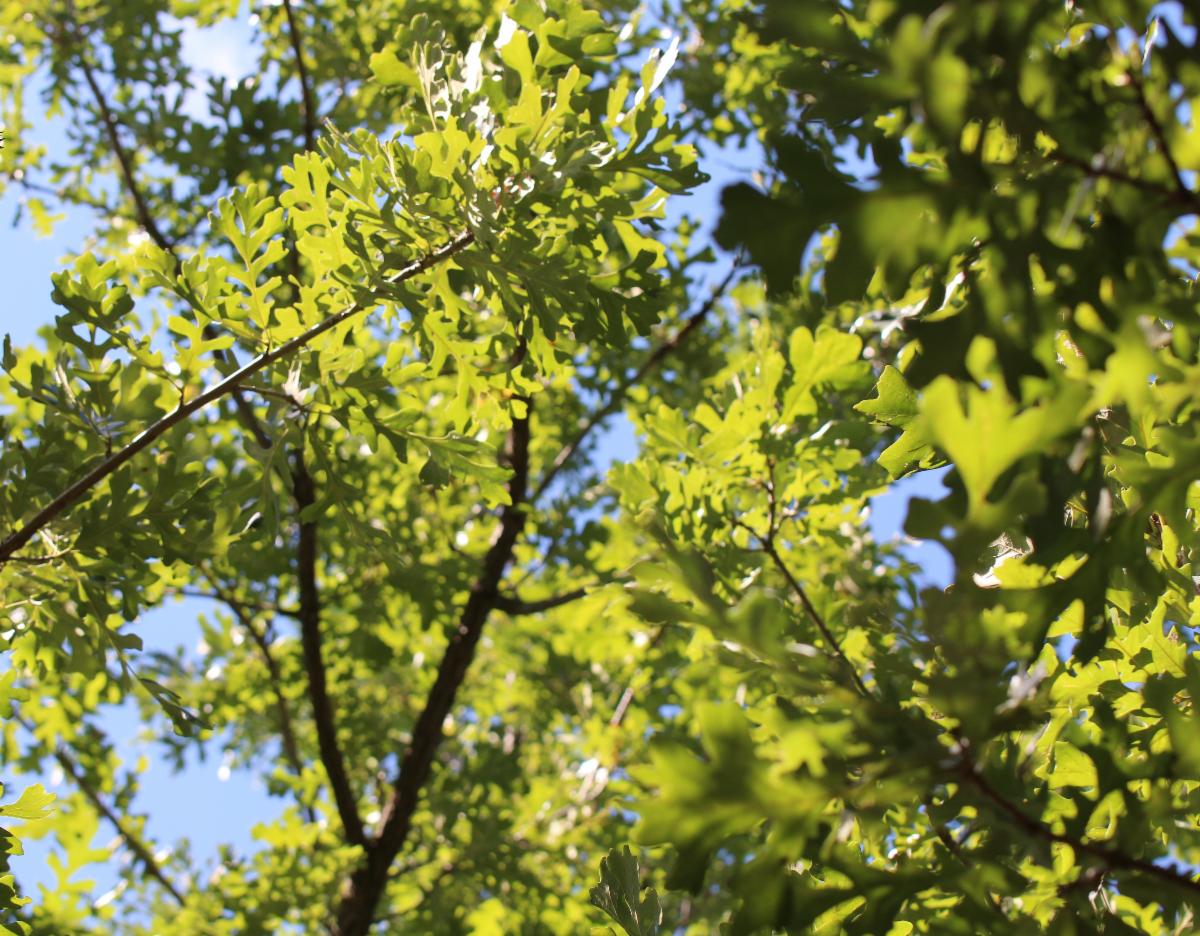
Oak trees are (rightfully) beloved as shade trees, but they also play an invaluable role in the environment as large, long-lived keystone species. This one is a Bur Oak (Quercus macrocarpa).
Also, we do recommend Dr. Tallamy's books highly, so consider picking one up at your local independent bookstore or making use of your library card to get hold of a copy; they're worth the read!
Everybody loves an oak tree, for the excellent shade they provide, their iconic acorns, and their commanding presence in the landscape! And anyone who's read the work of Doug Tallamy tends to especially like oak trees. In his excellent 2007 book "Bringing Nature Home" and his more recent (2021) book "The Nature of Oaks," Dr. Tallamy talks extensively about how oaks act as "keystone" species. The short version of what that means is that oaks support a truly extraordinary number and variety of native animals, from insects and birds, to just about everything else: oaks are a critical component of natural food webs.
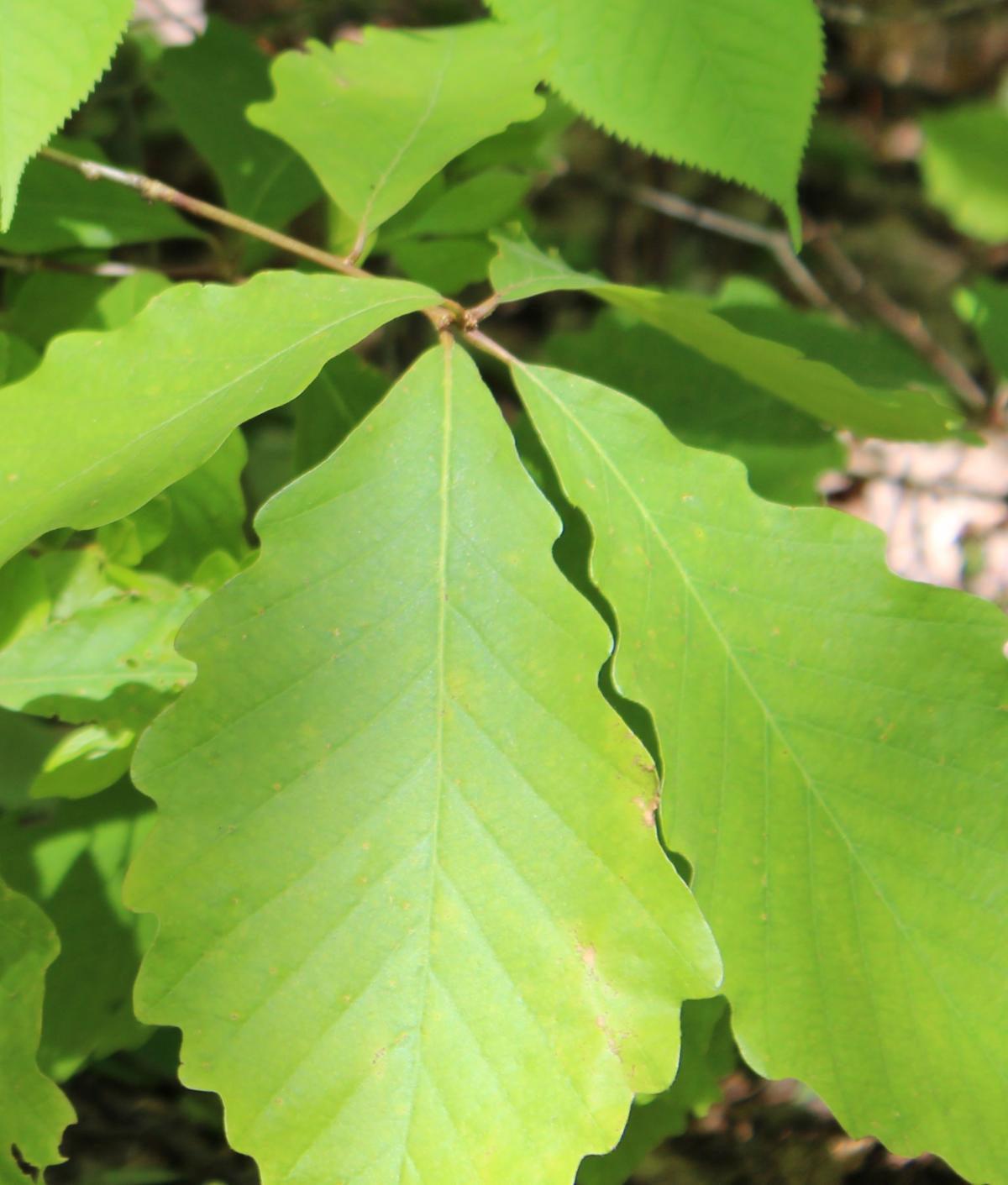
There are many, many different kinds of oaks, adapted to a huge number of different conditions; there's certainly a species adapted to where you live! This one is a Chestnut Oak (Quercus montana), and this particular plant was growing in a large stand along a floodplain at the base of a mountain ravine in Pennsylvania. Other species of oaks, however, are adapted to grow on top of mountains, at the beach, and practically everywhere in-between!
Where oaks and other native plants are concerned, we always try to remind people that diversity is also a critical component of ecosystem health: keystone species don't support all creatures and insects, so it's crucial to plant a variety of native plants. Biodiversity is non-optional, where functioning ecosystems are concerned. A loss of any one native species weakens the entire food web, so supporting biodiversity requires biodiverse plantings. Most insects are specialists of one sort or another, and non-oak specialist insect species can't feed on oaks! The obvious example is Monarch Butterflies, which can only lay their eggs and raise their caterpillars on milkweed (Asclepias) species, but they are far, far from the only specialist insects out there, and we can't afford to leave any one of those species behind. Oaks can do a lot of heavy lifting where the natural world is concerned, but they can't hold up the entire sky. A keystone, after all, is pointless if it's not a part of a larger structure. Biodiverse plantings are critical to maintaining a biodiverse habitat!
With that said, when you have limited time, money, energy, resources, and/or space, but you want to support your region's native species as much as you can with the resources available to you (let's be real, this describes most of us), what can you do? You can make the biggest difference with the least amount of labor by planting a keystone species, especially a big one like an oak tree, which doesn't just support a wide variety of creatures, it also supports a huge number of them over a long period of time by virtue of its size and longevity. So let's talk about oaks!
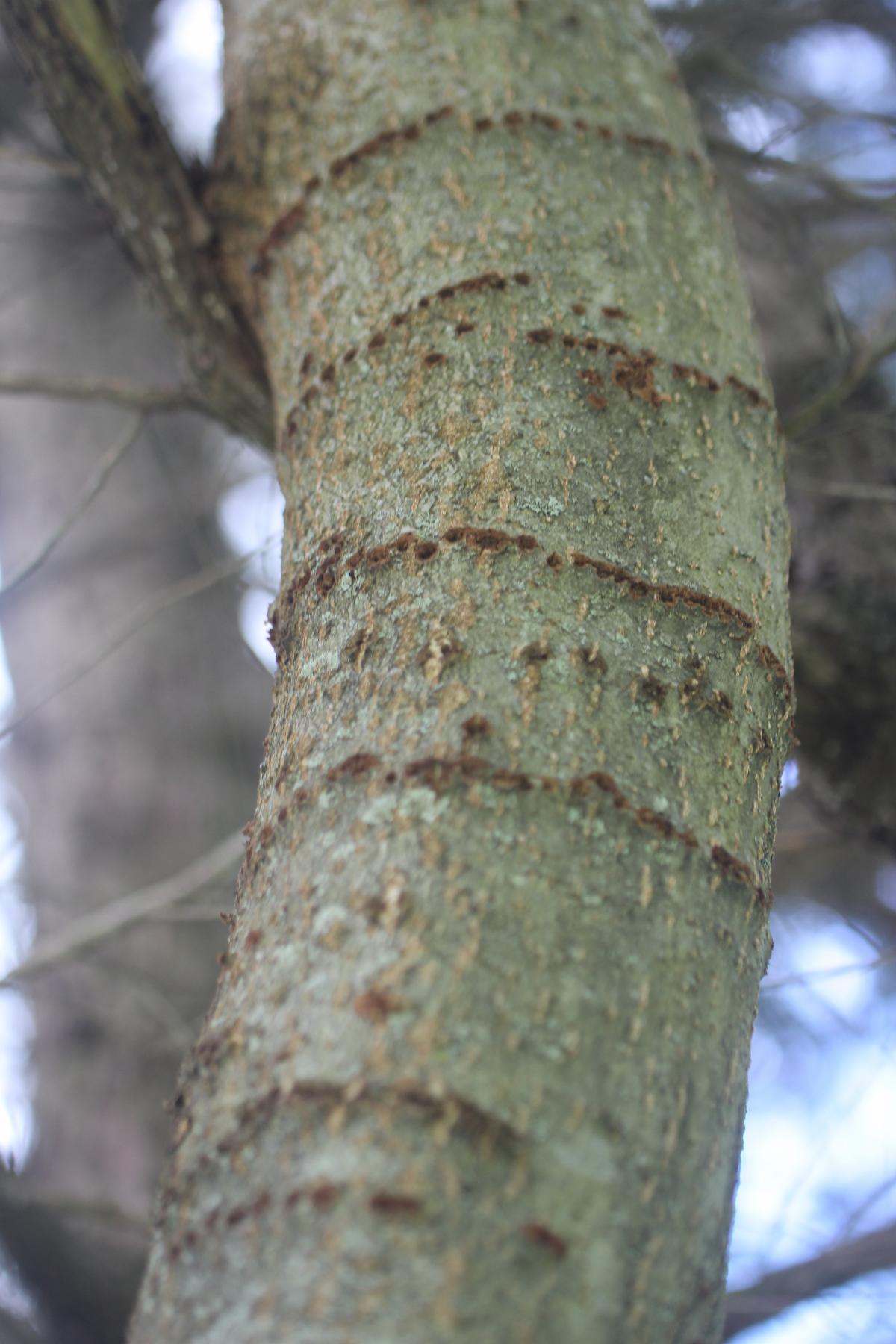
It may not be the showiest of pictures, but it illustrates the point well; the holes in this Pin Oak (Quercus palustris) were made by a Yellow-Bellied Sapsucker (Sphyrapicus varius), a type of native woodpecker which, despite its name, will also eat a variety of insects, fruits, and nuts, in addition to tree sap. Despite looking somewhat dramatic, these holes (sap wells) don't typically cause any serious harm to the tree, and are quite common on oaks. Sap wells are also important food sources for hummingbirds, who feed on both the sap and the tiny insects who are drawn to it. It goes to show how trees can be used by a wide variety of creatures in ways you wouldn't necessarily expect.
There are about 600 species of oaks (Quercus sp.) worldwide, and (obviously) not all of them are native to the US. Of the ones that are, not all of them are going to be native to where you live. And of the ones that are native to where you live, not all of them are going to thrive in the conditions of your planting location. Oaks as a genus have adapted to an incredible variety of conditions, but that means you need to find one that matches the conditions you have. If, for example, you have swampy conditions, you'll likely have trouble keeping an upland oak species alive (and vice versa). It's better to do further research and find an oak species well-suited to your location than it is to simply get and plant an oak tree because it's supposed to be a good species for wildlife. After all, one of the things that makes oaks so special as a keystone species is their size and longevity. Planting one oak that has a good chance of reaching maturity and maybe reproducing throughout the area (thank you, forgetful bluejays, squirrels, etc...) is a thousand times more effective than planting a dozen oaks that are unsuited to their location and destined to die young. It's worth doing your research on this one!
On the subject of forgetful squirrels and other creatures, let's talk about acorns. One of the easiest ways to get an oak established is simply to plant an acorn (if you find your acorn locally and ensure that the tree it came from is native, then all that "choosing a species you know can grow in your local conditions" work is already done for you). However, there are two crucial, often-forgotten things to keep in mind about acorns.
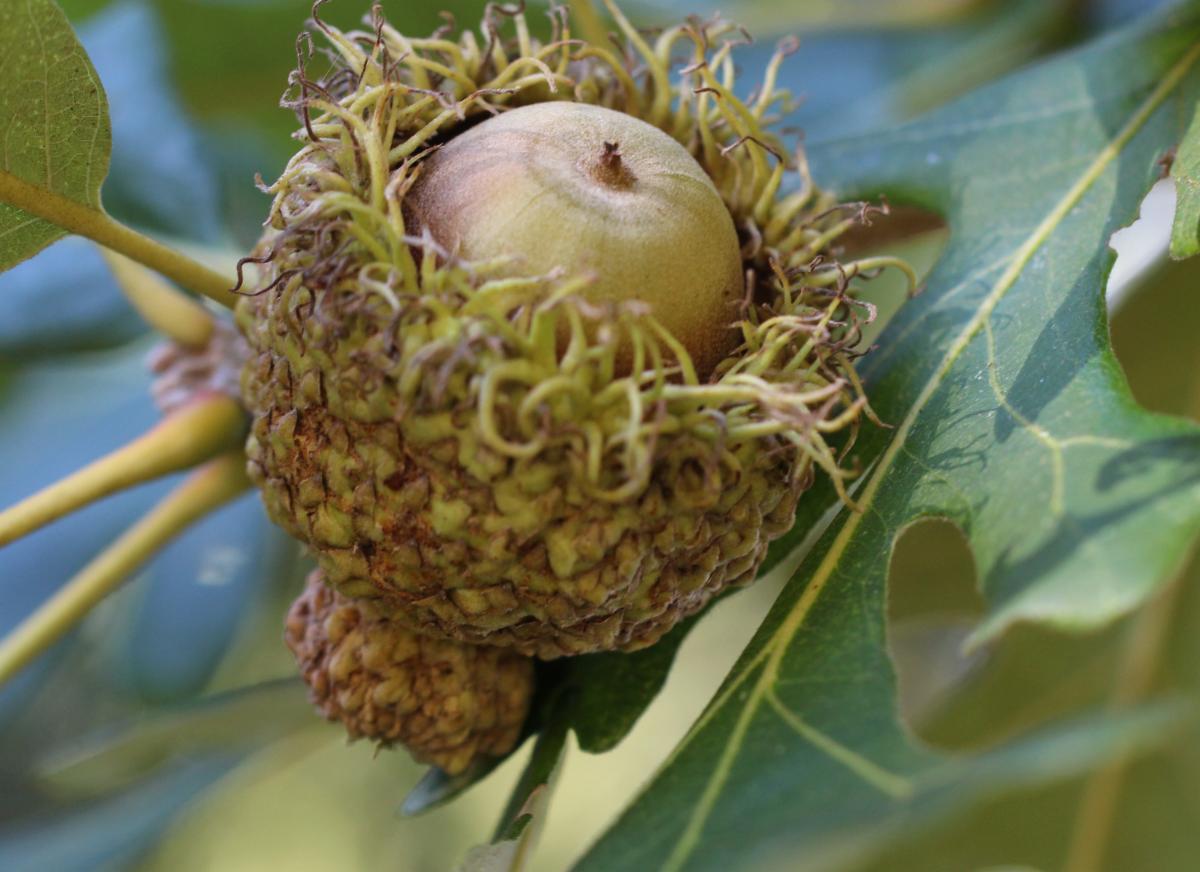
Not all acorns look the same! Now you know how the Bur Oak (Quercus macrocarpa), aka the Mossycap Oak, got its name.
1) Squirrels and chipmunks (and all other nut-eating creatures) love acorns, and the meat of an acorn often doesn't part ways with a young oak tree for a surprisingly long time, which means many animals can and will (with frustrating regularity) dig up the roots of young oaks in search of a snack. When starting an oak from an acorn, you will likely have to protect both the seedling and its roots with something that will keep the squirrels and others at bay until the tree's at least a foot tall or so.
2) Acorns can't be stored long-term in any functional way and remain viable. As with many nuts, they basically have to be planted immediately, or they simply will never grow. There's a technical and evolutionary reason for this (it involves drying out, and can actually be circumvented in a few ways, but those ways are a bit tricky), but the upshot is that if you pick up an acorn, take it home, and leave it on the counter for a week before planting it, your 'planting window' has almost certainly already passed, your acorn is dead, and it simply won't grow. This makes sense if you consider the fact that acorns are usually planted by squirrels and blue jays making a winter stash--creatures who, notoriously, don't tend to wait around much. If you're going to plant an acorn, be a squirrel about it: pick it up, take it to where you want it, and put it directly in the ground, pointed sideways at about 2 inches deep (and now you know how deep squirrels bury their stashes). Some species (namely the white oak group like White Oaks, Quercus alba, and Chestnut Oaks, Quercus montana) start germinating almost immediately, so don't be alarmed if the acorn you pick up already has a root started that is a couple inches long sticking out of the acorn, just make sure you dig a hole big enough to accommodate the root without damaging it.
While we're speaking of roots, another major problem people run into when planting oaks is a common problem for planting many trees: size. When planting a tree, it is admittedly far, far more satisfying to plant a six-foot tall tree than a six-inch tall one, and oaks have a reputation for being slow-growing; of course people want to plant a tree with a head start. Planting a bigger tree looks, feels, and seems like it ought to be more effective than planting a very small one. However, the opposite is almost always true. The reason smaller trees seem to be more vulnerable is because their roots aren't very big yet, and they don't have energy reserves to fall back on if conditions are poor. Planting an already-large tree has the opposite problem: its roots were well-established. ('Were' being the key word). Already having well-established roots sounds like a good thing, but in this case it's actually a bad one.
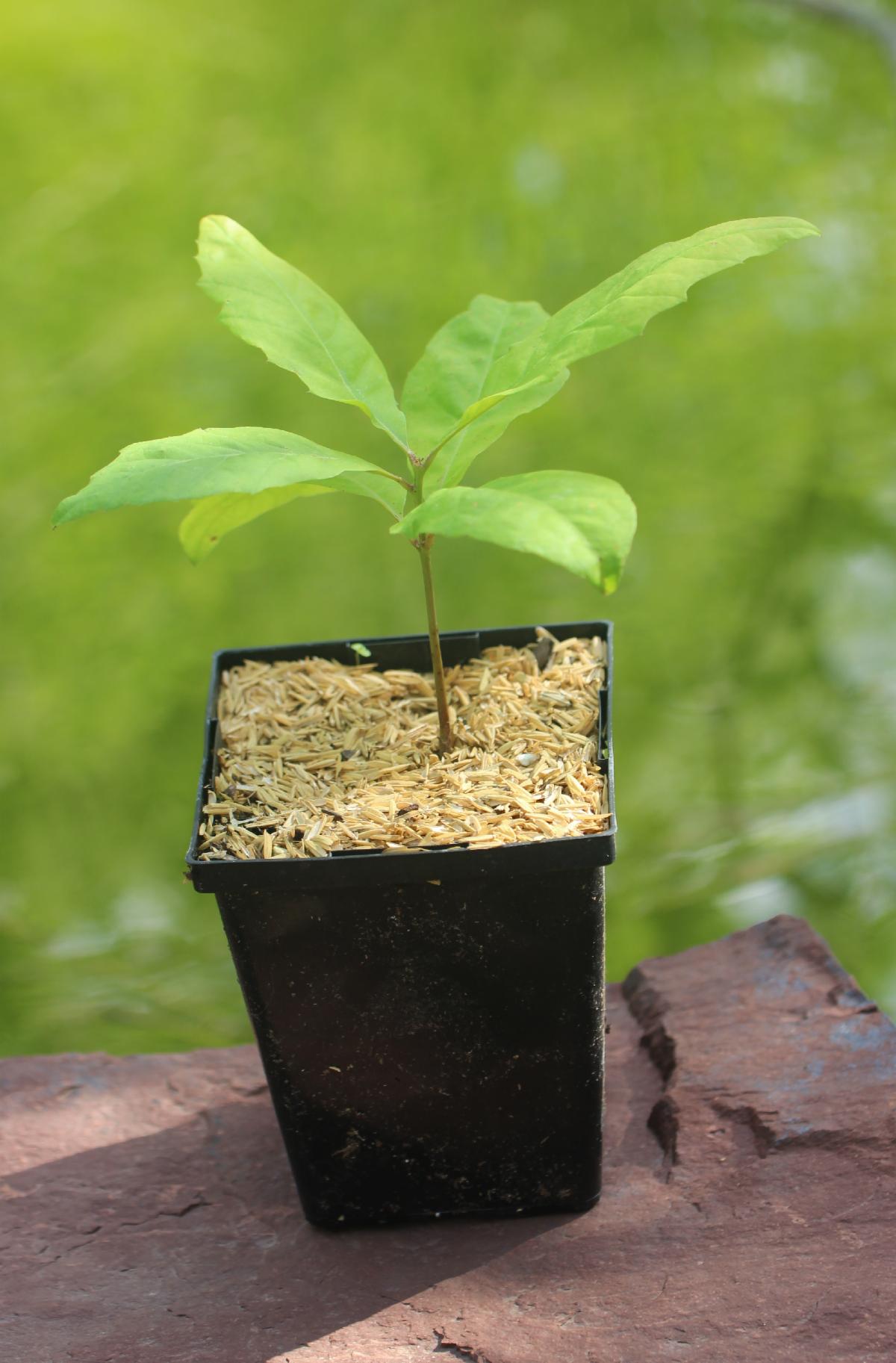
This probably isn't what you picture when you think of the ideal size at which to plant a tree. Nevertheless, this Red Oak (Quercus rubra) is actually the perfect size to plant, because its roots have not yet reached the bottom of its pot.
While it's true that a large tree is more likely to recover in the short-term from a disturbance like being dug up or a sudden drought, any tree that has had its roots kept small enough (or made to be small enough through the use of digging and cutting tools) to transport and transplant at six feet tall (or more!) will have, at best, artificially tiny roots and at worst, quite badly wounded or pot bound ones. The life of a tree that is planted when it is that large is simply briefer and less vigorous than the life of a tree whose roots were allowed to spread naturally down and out from day one. And that is especially true for oaks.
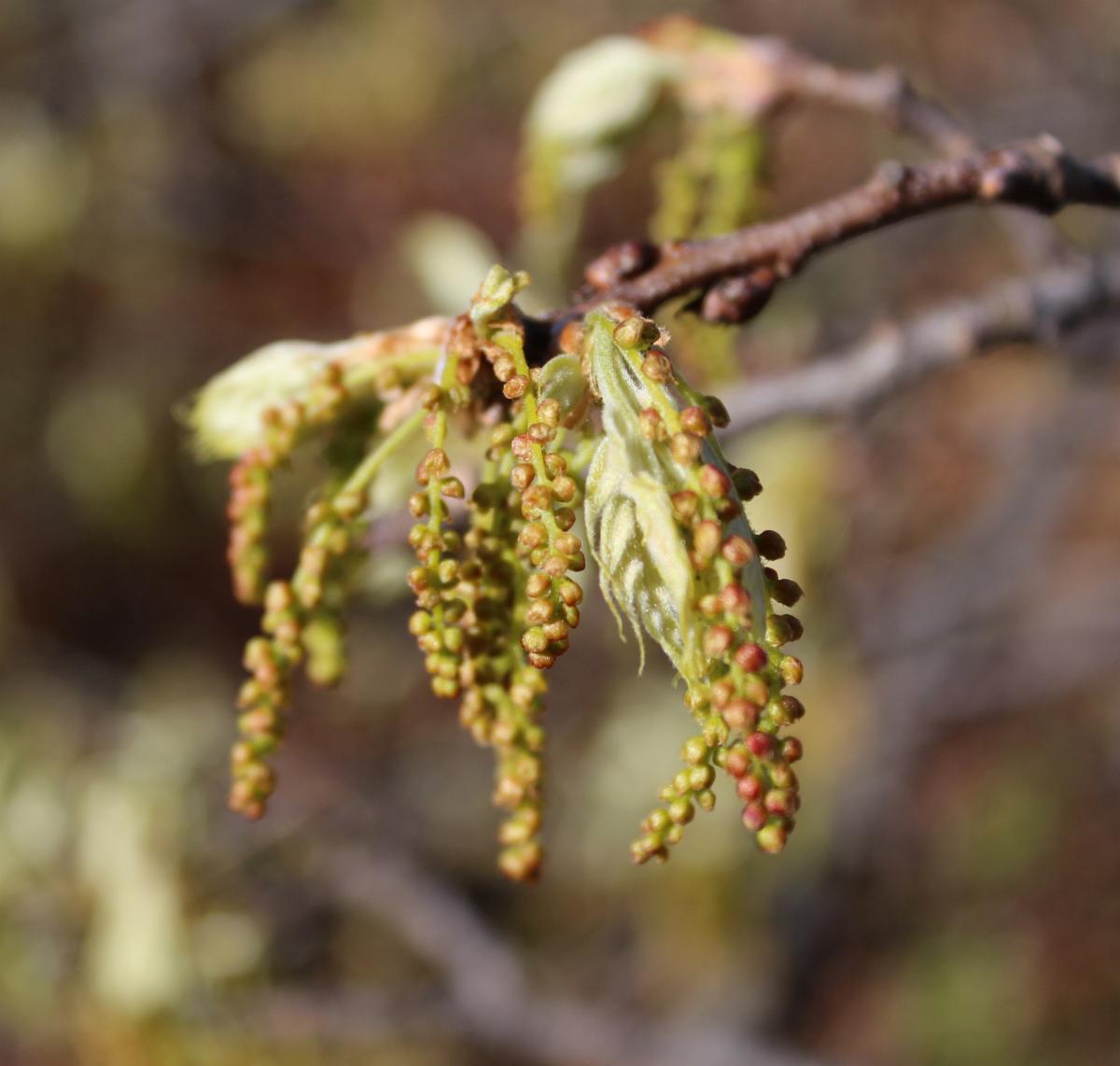
Oaks like this Northern Red Oak (Quercus rubra) don't put out big showy clusters of flowers like Buckeyes (Aesculus sp.) or Catalpas (Catalpa sp.), but how would they produce the crucial wildlife food of acorns if not for these clusters of male flowers producing wind-pollinated pollen for the (less showy) female flowers found at the leaf axils?
Oak trees generally have very large root systems. White oaks in particular tend to grow first down, then out, spreading at a surprisingly rapid pace for a slow-growing tree. Which means that to move one of these trees once it's reached more than about a year and a half old involves turning its root system into a stub of what it should be. Obviously, this doesn't do the health of the tree any favors, and it's a large part of why it's so difficult to find oaks available for sale. Modern nursery culture has made buying large trees with their roots balled and burlap-ed the norm, and oak trees simply should never be treated that way.
If you're going to buy an oak tree (again, remember that simply planting a fresh acorn circumvents many of these problems), it should be very small--ideally less than a foot or so tall--with a thin trunk, and it likely won't have too many leaves yet. The deeper the pot you buy it in, the better, because the taproot will start to spiral when it reaches the bottom (which is also not good for the tree; we've talked about this before). You should plant your tree in the ground as soon as possible to let its roots spread. The first investment an oak tree makes is its roots, and there's a reason for that. If that investment is destroyed after a few years so that the tree can be moved, the tree will never truly recover. This is another situation where convenience has to give way to doing something right.
After reading about keystone species the first time (White Oaks are usually the example used), your first instinct may have been to run out and purchase the largest White Oak tree you could to plant in your yard, and that's an entirely laudable instinct. Now, after reading about some of the common pitfalls people run into, you may feel that this whole mess is too complicated to get into. But it's not: for planting oak trees, there are only a few basic guidelines, and beyond that, it's up to nature. Trees want to grow! All we have to do is give them a fighting chance to do it, so we've written up some guidelines for you below.
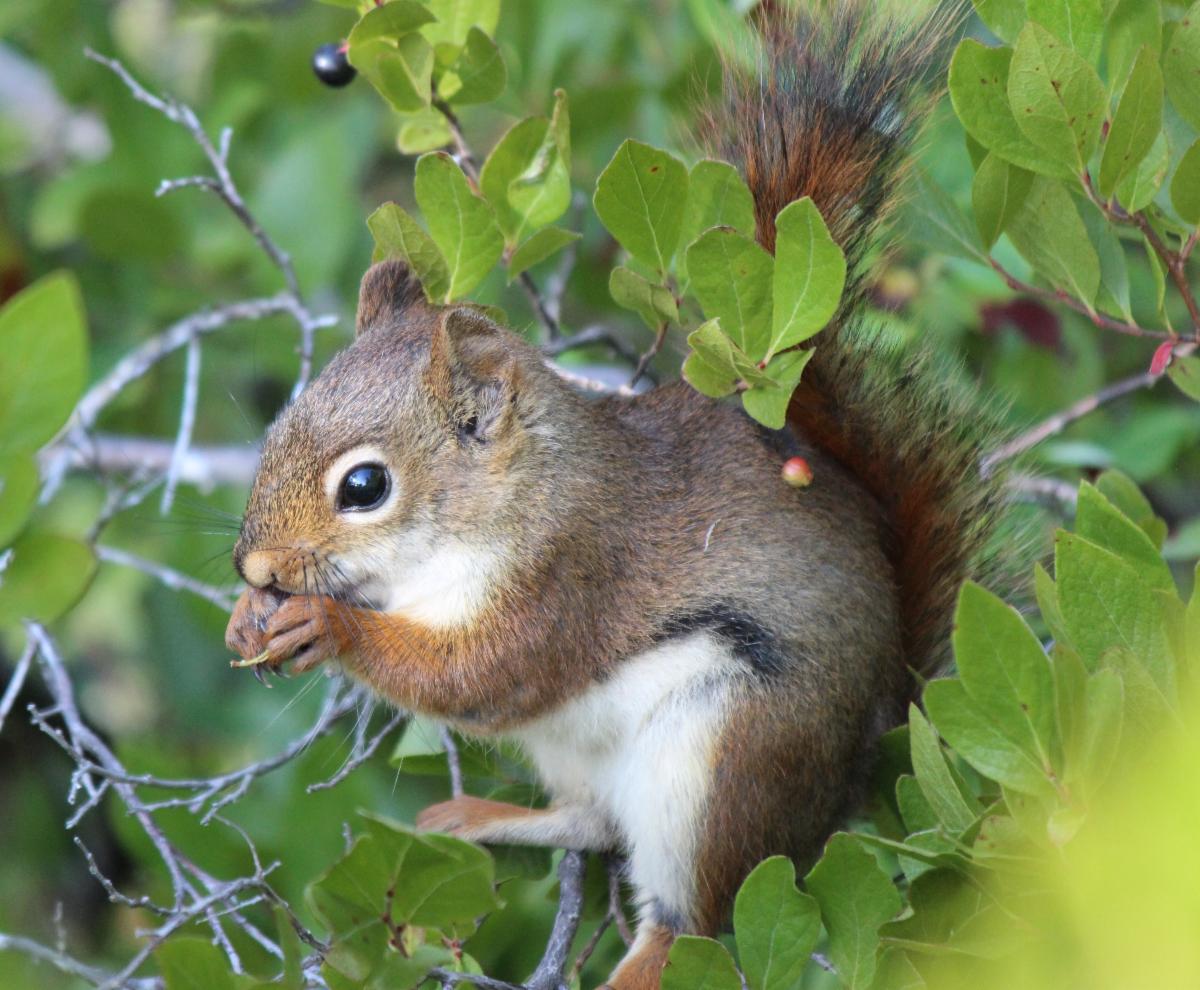
This American Red Squirrel (Tamiasciurus hudsonicus) may be eating fruit at the moment, but they're opportunists! Yes, they may try to dig up your acorns, but they're a part of the food web as well. And who can blame a face that cute?
The Quick And Dirty Guide For Growing Oaks
Step 1:
Shelve the guilt; most people deeply overthink planting trees. Yes, it will take a while to grow, but it will grow! Yes, it would be bigger now if it had been planted ten years ago, but all trees started small! Time will continue to pass with or without a tree in the ground, so you may as well just do it when you can! Watching trees grow is wonderfully rewarding.
Step 2:
Find a location. Many oak species can get very large, so plan for a spread of up to 80 feet, and a height of up to 100 feet, depending on what species you choose (don't plant it too close to your house!). What's your location like, is it wet? Dry? Rocky? Find out what oaks are native to your area, and of those, what oaks like the conditions you have on hand.
Step 3:
Choose, acquire, and plant your tree. Some oak species are easier to find in the trade than others, but with some searching you should be able to find a native oak species that will suit your conditions and location. And if all other attempts at finding a tree fail, simply pick a rainy day in the fall and find some freshly-fallen acorns, bring them home, and plant them (sideways) about 2 inches deep! This can be an extremely rewarding project to do with young kids. If you do end up buying a tree, just make sure you are buying a small, young tree to give its roots the best possible chance to succeed, and plant it immediately. Always remember:
- Dig your hole twice as deep and wide as the pot your plant came in
- Fill the hole back in with loose soil
- Gently break up the soil around the roots of your new plant before planting
- The soil surface after planting should be flat with the surrounding ground (your plant should neither be in a mound nor a divot)
- Water your plant thoroughly as soon as it's in the ground to help the soil settle around its roots and to help it recover from the shock of being moved.
- DO NOT volcano mulch. If you want to use mulch around your new tree, make sure the mulch doesn't cover any of the above-ground portion of the tree's trunk.
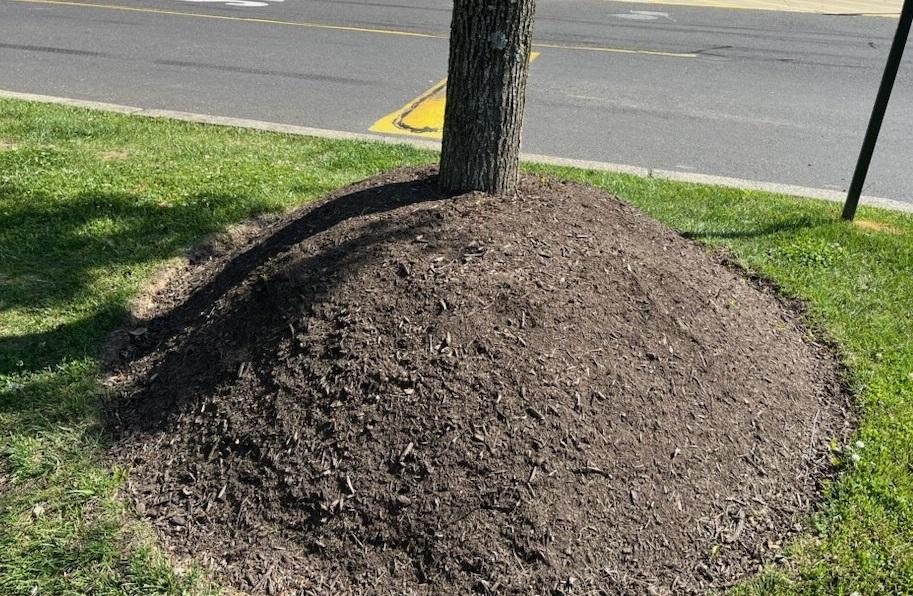
This mound of mulch at the base of a tree is called "volcano mulching." It's very popular. It also basically ensures the tree will die before it reaches maturity; don't ever do this.
Step 4:
Protect your tree. For the first year or so of its life, you'll have to protect your little tree from squirrels and chipmunks (hardware cloth cages work wonders, but beware of gaps in the caging). And once it gets slightly bigger, be careful to protect it from deer browsing and deer antler rubbing (it will eventually outgrow the need for this, too). Put a little water on it during droughts, and keep your little tree from getting overrun by weeds while it's still small. Sometimes things simply happen to young trees, but protecting it, giving it a little extra water during dry spells, and keeping it clear of weeds will give it its best chance. As we said before, all trees started small; nature doesn't allow for 100% success guarantees, but plenty of trees have gotten large without our help--helping out your little tree gives it its best shot at a long, healthy life. And if something does happen to your tree? Simply refer to step 1 and try again!
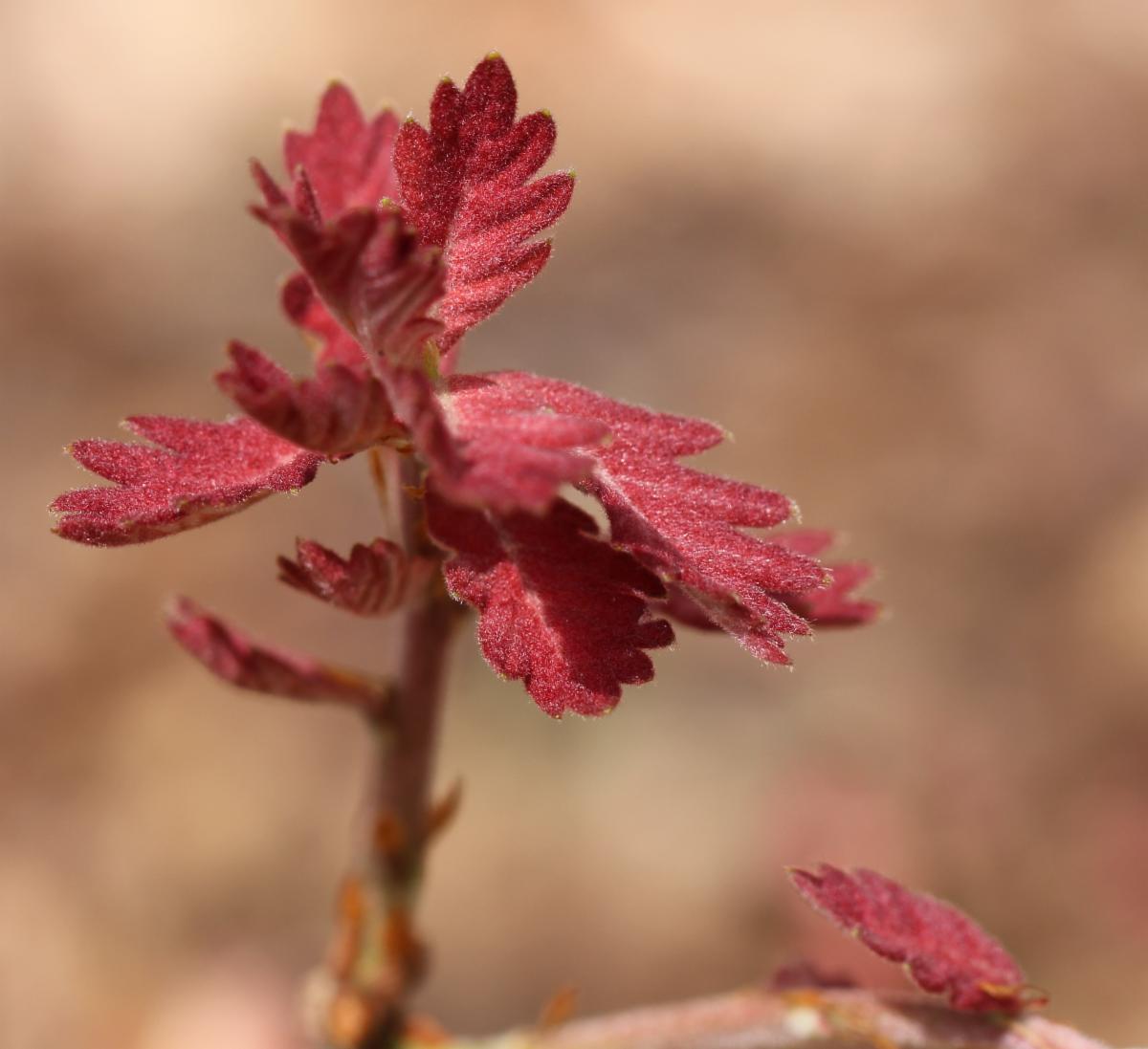
Oaks aren't just valuable for the wildlife! Oaks are intrinsically linked with human history in too many ways to list, and they're also just delightful trees. Personally, I love the way Black Oak (Quercus velutina) leaves look when they're just beginning to emerge in the springtime...
